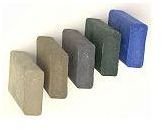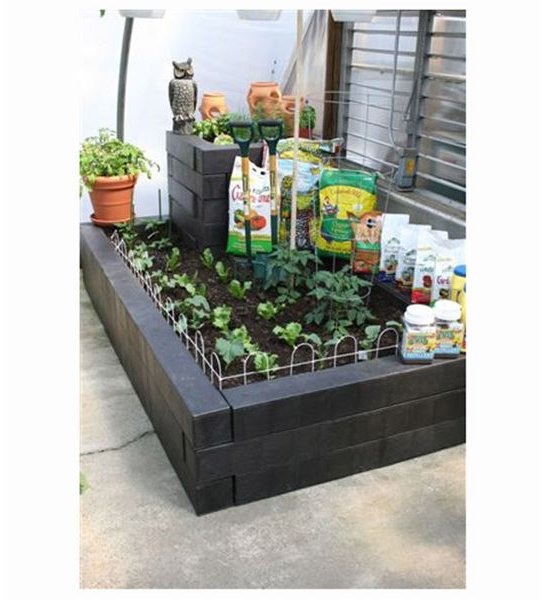Wood Landscape Timbers vs. Plastic Timbers - the Enviromentally Sound Choice
Plastic landscape timbers are used in various ways, and they come in three forms: hollow, solid and structural. The hollow timbers are used for things that won’t take stress from heavy weight. Structural timbers are the heaviest and are designed to be used where the greatest support is needed. These plastic landscape timbers are made from recycled products, including milk jugs, plastic bags and other resins. They are becoming the material of choice for green conscious gardeners and home owners, replacing wood timbers that are treated with various chemicals. For people who wish to incorporate a more eco-friendly approach to landscaping and other outdoor uses, plastic landscape timbers represent an affordable alternative to wood - even if the initial investment is more than that of wood.

Plastic Landscape Timbers versus Wood Landscape Timbers
Wooden landscape timbers that are used outdoors are chemically treated to prevent rotting. They are currently treated with Alkaline Copper Quaternary or ACQ. This is the chemical compound that replaced Chromated Copper Arsenate or CCA, a product that was phased out by the EPA on December 31, 2003. ACQ has more copper than the previous product, but the greater advantage is that it contains no arsenic. Plastic landscape timbers require no chemical treatments because of the process used in their manufacture.
What’s in Plastic Landscape Timbers?
Plastic landscape timbers are made from a combination of materials, including High Density Polyethylene (HDPE,) mixed plastic/sawdust or HDPE/fiberglass, and other mixed resins, including recycled wood pulp. For each of these combinations of recycled materials, the total recovered content used in their manufacture ranges from 75 to 100%. The fact that the ingredients used in the making plastic landscape timbers are recycled from previously used plastics, sawdust, fiberglass and resins means that these things won’t wind up in a landfill. It lessens the need to rely on landscape timbers that are made out of virgin wood and taken from trees that may take anywhere from 25 to 50 or 100 years or more to reach a mature size.
Grades of Plastic Landscape Timbers
Plastic landscape timbers come in three grades: hollow, solid and structural solid. Hollow timbers are used for light construction like shutters, fence signs or low-load deck surfaces. Solid timbers are used for applications carrying medium to light loads, including planters or deck surfaces. Structural grade timbers contain 20% fiberglass because it gives the timbers strength. It also lessens the propensity for expansion and contraction, something that is a continual problem with real wood landscape timbers.
Benefits of Plastic Landscape Timbers
One of the best benefits of plastic landscape timbers is the fact that they don’t need to be stained or sealed. They are designed to last indefinitely and are made of a high percentage recycled products. Another advantage is the fact that unlike real wood timbers, there is no concern about splintering or cracking. When used for things such as shutters, fencing, decking or potentially, even for raised garden beds and planters, there is no need to worry about whether chemicals such as those used in the treatment of wood landscape timbers will seep into soil. Repeated watering will cause wooden planters to rot, but rotting is not a concern with plastic landscape timbers.
Durability and Maintenance of Plastic Landscape Timbers versus Wood
Plastic landscape timbers need no regular maintenance, whereas wood landscape timbers need regular touch-up coats of stain and waterproofing treatments. This doesn’t include the treatments that virgin wood receives before it reaches home improvement stores where it is sold. Wood is subject to contraction and expansion, depending on the weather at any given time of the year. This is not a problem with plastic landscape timbers because they remain consistently uniform.
Conclusion
The cost of wood landscape timbers is largely contingent on the availability of the desired wood. Certain woods are preferred for outdoor use because of their durability and adaptability. By sending materials that either wind up in recycling centers or landfills to companies that can turn the combined materials into plastic landscape timbers, consumers are investing in a greener, more environmentally friendly product.
Until these plastic landscape timbers become more visible and more readily available, the price may remain higher than that of wooden landscape timbers. While the initial investment may be substantially more, the fact that plastic landscape timbers are infinitely more durable and are designed to last a lifetime makes plastic the more economical choice. Over time, wooden landscape timbers need repeated water sealing treatments. Expansion and contraction from weather compromises the strength of wood. Animals frequently gnaw at wood, another thing that compromises the strength and integrity. In the end, despite the higher cost of the initial purchase, because they require no maintenance and are considerably more durable than wood, the long range cost or plastic landscape timbers is cheaper than that of wood.
